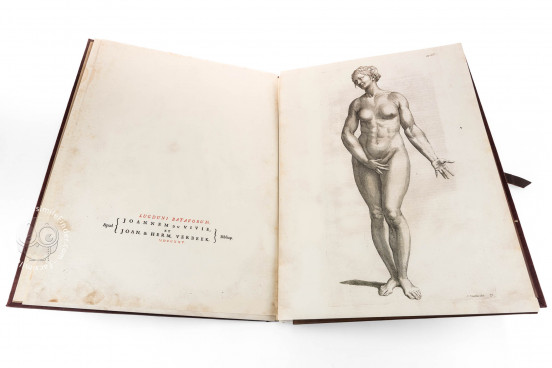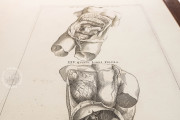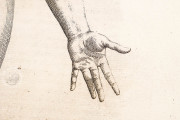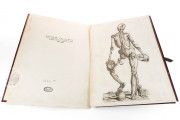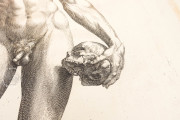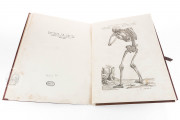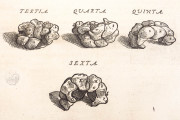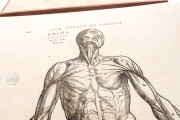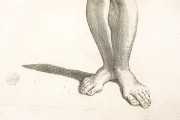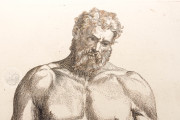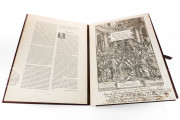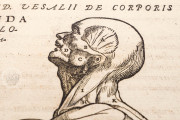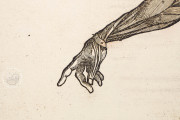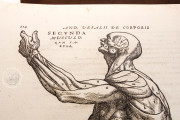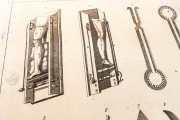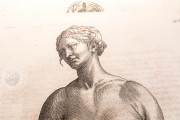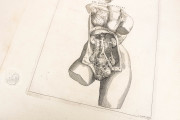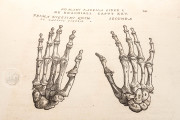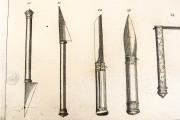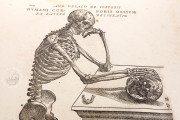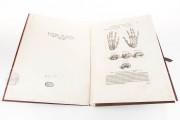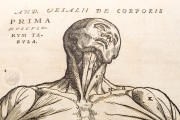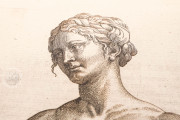Vesalius (31 December 1514 – 15 October 1564) was a Brabantian (in modern-day Belgium) anatomist, physician, and author of one of the most influential books on human anatomy, De humani corporis fabrica (On the Fabric of the Human Body). Vesalius is often referred to as the founder of modern human anatomy. He was professor at the University of Padua and later became Imperial physician at the court of Emperor Charles V. Andreas Vesalius is the Latinized form of the Dutch Andries van Wezel, a common practice among European scholars in his time.
In 1543, Vesalius asked Johannes Oporinus to help publish the seven-volume De humani corporis fabrica groundbreaking work of human anatomy he dedicated to Charles V and which most believe was illustrated by Titian's pupil Jan Stephen van Calcar, though others believe was illustrated by different artists working in the studio of Titian, and not from Van Calcar himself.
A few weeks later he published another version of his opera, entitled De humani corporis fabrica librorum epitome (Abridgement of the Structure of the Human Body) more commonly known as Epitome, with a stronger focus on illustrations than text, so as to help readers easily understand his findings. The actual text of Epitome was an abridged form of his work in De fabrica, and the organization of the two books were quite varied. He dedicated it to Philip II of Spain, son of the Emperor.
The Fabrica emphasized the priority of dissection and what has come to be called the "anatomical" view of the body, seeing human internal functioning as an essentially corporeal structure filled with organs arranged in three-dimensional space. This was in stark contrast to many of the anatomical models used previously, which had strong Galenic/Aristotelean elements, as well as elements of astrology. Although modern anatomical texts had been published by Mondino and Berenger, much of their work was clouded by their reverence for Galen and Arabian doctrines.
Besides the first good description of the sphenoid bone, he showed that the sternum consists of three portions and the sacrum of five or six; and described accurately the vestibule in the interior of the temporal bone. He not only verified the observation of Etienne on the valves of the hepatic veins, but he described the vena azygos, and discovered the canal which passes in the fetus between the umbilical vein and the vena cava, since named ductus venosus. He described the omentum, and its connections with the stomach, the spleen and the colon; gave the first correct views of the structure of the pylorus; observed the small size of the caecal appendix in man; gave the first good account of the mediastinum and pleura and the fullest description of the anatomy of the brain yet advanced. He did not understand the inferior recesses; and his account of the nerves is confused by regarding the optic as the first pair, the third as the fifth and the fifth as the seventh.
In this work, Vesalius also becomes the first person to describe mechanical ventilation. It is largely this achievement that has resulted in Vesalius being incorporated into the Australian and New Zealand College of Anaesthetists college arms.
We have 1 facsimile edition of the manuscript "Toruń On the Fabric of the Human Body (Collection)": Atlas Anatomiczny A. Vesaliusa facsimile edition, published by Orbis Pictus
Request Info / Price
